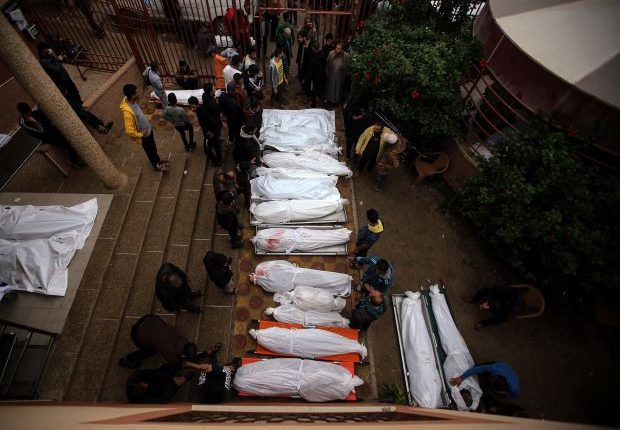Israeli forces enter southern Gaza’s largest city as fears grow for civilians

By Victoria Kim and Shashank Bengali
JERUSALEM – Israeli troops are fighting in the heart of southern Gaza’s largest city, a military commander announced Tuesday (5), describing some of the heaviest combat of the two-month war amid growing concerns that there is almost nowhere left for civilians to flee.
After days of warning civilians to leave the city, Khan Younis, Israeli forces stepped up their attacks overnight. Intense bombing was heard early Tuesday from inside Nasser Hospital, the city’s largest, where many Palestinians who have sought shelter were sleeping in hallways.
“We are in the most intense day since the beginning of the ground operation — in terms of terrorists killed, the number of firefights and the use of firepower from the land and air,” the commander of Israel’s southern military command, Maj. Gen. Yaron Finkelman, said in a statement. “We intend to continue to strike and secure our accomplishments.”
Lt. Gen. Herzi Halevi, the chief of the general staff in the Israeli military, said Tuesday evening that Israeli forces had encircled Khan Younis in the south and were continuing to fight to consolidate control over Gaza City and other places in the north.
“We have secured many Hamas strongholds in the northern Gaza Strip, and now we are operating against its strongholds in the south,” he said. He said the fighting had often been house-to-house, and that adversaries were sometimes wearing civilian clothes. ”Our forces find in nearly every building and house weapons and in many houses terrorists, and engage them in combat,” he said.
It was not possible to independently confirm Israel’s account of the combat. The United Nations’ humanitarian office said that the period from Sunday (3) to Monday (4) afternoon “saw some of the heaviest shelling in Gaza so far.”
After Israeli forces ordered civilians to leave northern Gaza in the first month of the war, before their ground invasion, the military has issued new evacuation orders for large parts of southern Gaza, including areas of Khan Younis. The warnings have led human rights groups and aid agencies to warn that beleaguered civilians are being pushed into a patchwork of smaller and smaller areas and, even then have no guarantee that they will be spared from airstrikes.
Thomas White, the Gaza director of the UN agency for Palestinian refugees, said early Tuesday that neighbourhoods that are home to some 600,000 people were ordered to be emptied.
The evacuation could drive an additional half-million people to Rafah, along the southern border with Egypt, doubling the number of the displaced sheltering in the already brimming city, he wrote on X, formerly known as Twitter.
The UN humanitarian office said Monday that some of the shelters Israel had told people to flee to were “already overcrowded.” With the shelters in Rafah already well beyond capacity, the new arrivals were erecting tents and fashioning makeshift shelters in the streets or whatever empty spaces they can find around the city, according to the daily report from the UN office for humanitarian affairs.
International aid groups described in increasingly urgent terms the realities faced by Gaza’s civilians and the near impossibility of providing them with any relief.
“If possible, an even more hellish scenario is about to unfold, one in which humanitarian operations may not be able to respond,” Lynn Hastings, the UN aid coordinator for the Palestinian territories, said in a statement.
-New York Times
The bodies of people killed overnight in Israeli airstrikes are brought to the morgue at Nasser Hospital in Khan Younis, in southern Gaza, on Tuesday (Dec. 5, 2023). Israel’s renewed strikes have killed hundreds since Friday, Gazan officials say, raising questions about its stated efforts to reduce harm to civilians -Yousef Masoud/The New York Times


Comments are closed, but trackbacks and pingbacks are open.